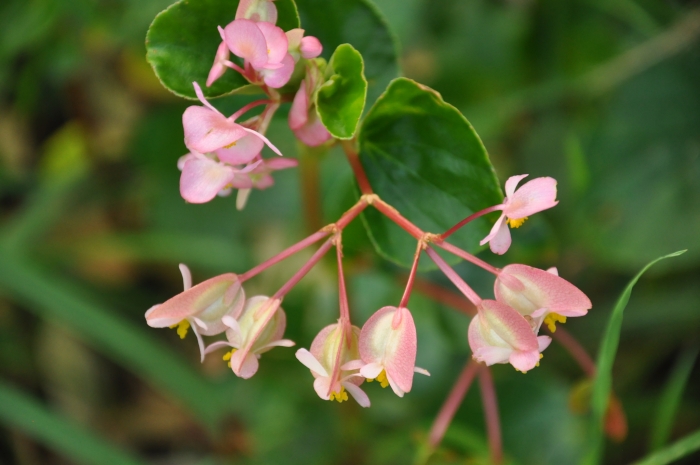Wax Begonia
(Begonia cucullata)
Wax Begonia (Begonia cucullata)
/
/

Wouter Van Landuyt
Public Domain
Image By:
Wouter Van Landuyt
Recorded By:
Copyright:
Public Domain
Copyright Notice:
Photo by: Wouter Van Landuyt | License Type: Public Domain | License URL: http://creativecommons.org/publicdomain/zero/1.0/ | Rights Holder: Wouter Van Landuyt | Publisher: iNaturalist | Date Created: 2016-03-29T11:52:05-07:00 |
















































Estimated Native Range
Summary
Begonia cucullata, commonly known as Wax Begonia, is an herbaceous perennial with a symmetrical, bushy growth habit. It is native to open woodlands and forest edges in South America. The plant typically reaches a height and width of 2 feet, featuring succulent, glossy, ovate leaves that range from pale green to pale reddish-brown, measuring 4–8 cm long and 6 cm wide with a toothed crenation. Wax Begonia blooms in the summer, or year-round in warmer climates, with showy flowers that come in shades of red, pink, or white. The fruit is notable for its three-winged structure.
Wax Begonia is valued for its versatility as a ground cover, border plant, or container specimen, offering continuous blooms and vibrant foliage. It is particularly appreciated for its low maintenance and adaptability to a range of light conditions, from full sun to shade. While older varieties prefer shade, newer cultivars have been bred to tolerate more sun. When grown indoors, they do well in south- or east-facing windows, but gradual acclimation is necessary to prevent leaf burn when changing light conditions. Wax Begonias require medium water and well-drained soil to thrive. However, gardeners should be cautious as Begonia cucullata can become invasive outside its native range, particularly in parts of the United States. It is advisable to consult local regulations before planting to prevent unintended spread.CC BY-SA 4.0
Wax Begonia is valued for its versatility as a ground cover, border plant, or container specimen, offering continuous blooms and vibrant foliage. It is particularly appreciated for its low maintenance and adaptability to a range of light conditions, from full sun to shade. While older varieties prefer shade, newer cultivars have been bred to tolerate more sun. When grown indoors, they do well in south- or east-facing windows, but gradual acclimation is necessary to prevent leaf burn when changing light conditions. Wax Begonias require medium water and well-drained soil to thrive. However, gardeners should be cautious as Begonia cucullata can become invasive outside its native range, particularly in parts of the United States. It is advisable to consult local regulations before planting to prevent unintended spread.CC BY-SA 4.0
Plant Description
- Plant Type: Herb
- Height: 0.5-1.5 feet
- Width: 1-2 feet
- Growth Rate: Moderate
- Flower Color: Pink, Red, White
- Flowering Season: Spring, Summer
- Leaf Retention: Evergreen
Growth Requirements
- Sun: Part Shade
- Water: Medium
- Drainage: Medium
Common Uses
Bird Garden, Butterfly Garden, Fragrant, Groundcover, Hummingbird Garden, Low Maintenance, Potted Plant, Showy Flowers, Street Planting
Natural Habitat
Native to open woodlands and forest edges in South America
Other Names
Common Names: Wax Begonia, Flor De Nácar, Begônia-Do-Brejo, Pärlemorbegonia, 사철베고니아, Bégonia
Scientific Names: , Begonia cucullata, Begonia cucullata var. hookeri, Begonia cucullifolia, Begonia dispar, Begonia paludicola, Begonia sellovii, Begonia sellowi, Begonia sellowii, Begonia semperflorens var. hookeri,
GBIF Accepted Name: Begonia cucullata Willd.